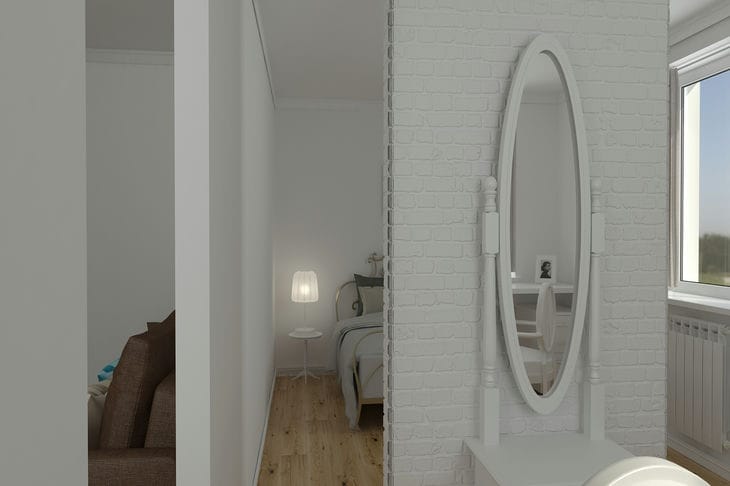Below are tips on using mirrors to expand space and increase natural light in a room.
Mirror placement
Strategic placement of mirrors is key to their effectiveness. They are best placed opposite light sources, such as windows or lamps, says Yulia Tychino .
This will allow them to reflect and enhance natural or artificial light in the room.
Mirrors can also be placed opposite each other, creating an endless visual space. This technique works especially well in small spaces, creating the illusion of more space.
Size and shape of mirrors
Choose mirror sizes that suit the size of the room. Large mirrors are best for spacious rooms, while smaller options will be more effective in smaller spaces.

In addition to size, the shape of mirrors also matters. Round and oval mirrors create softer reflections, while rectangular and square ones add a sense of definition and structure.
Choose the shape that best complements the style and design of your interior.
Position of mirrors relative to light sources
Place mirrors strategically opposite windows to reflect natural light and distribute it throughout the room. Place mirrors perpendicular to windows rather than parallel to them to avoid blinding glare.
To enhance artificial lighting, place mirrors opposite lamps. This will increase brightness and create the illusion of a more spacious room.
Group placement of mirrors
You can also place several mirrors together to create impressive compositions. Group placement of mirrors allows you to enhance the effect of expanding space and increasing light.
Try arranging mirrors in a gallery or creating a wall of mirrors. This will add depth and volume to the room. Experiment with different sizes, shapes, and placement of mirrors to find the best solution for your interior.
Mirror finishing
The choice of frame or framing for mirrors can also affect the visual perception of the space.
Minimalistic frames or no frames at all will create a more open and spacious look, while massive frames will give the mirrors visual “weight,” emphasizing their presence in the room.
You can also use frameless mirrors by mounting them flush into the wall. This will create the feeling that the mirror surface is an extension of the wall, which will significantly expand the visual space.
Interaction with other interior elements
Remember that mirrors do not exist in a vacuum. Their placement and design should be in harmony with the overall style of the interior.
Choose mirrors that complement the color scheme, lighting, and furniture options in the room.
The correct use of mirrors can work wonders, visually increasing the space and enhancing natural and artificial lighting. Experiment, find the best solutions and enjoy a more spacious and bright interior.









